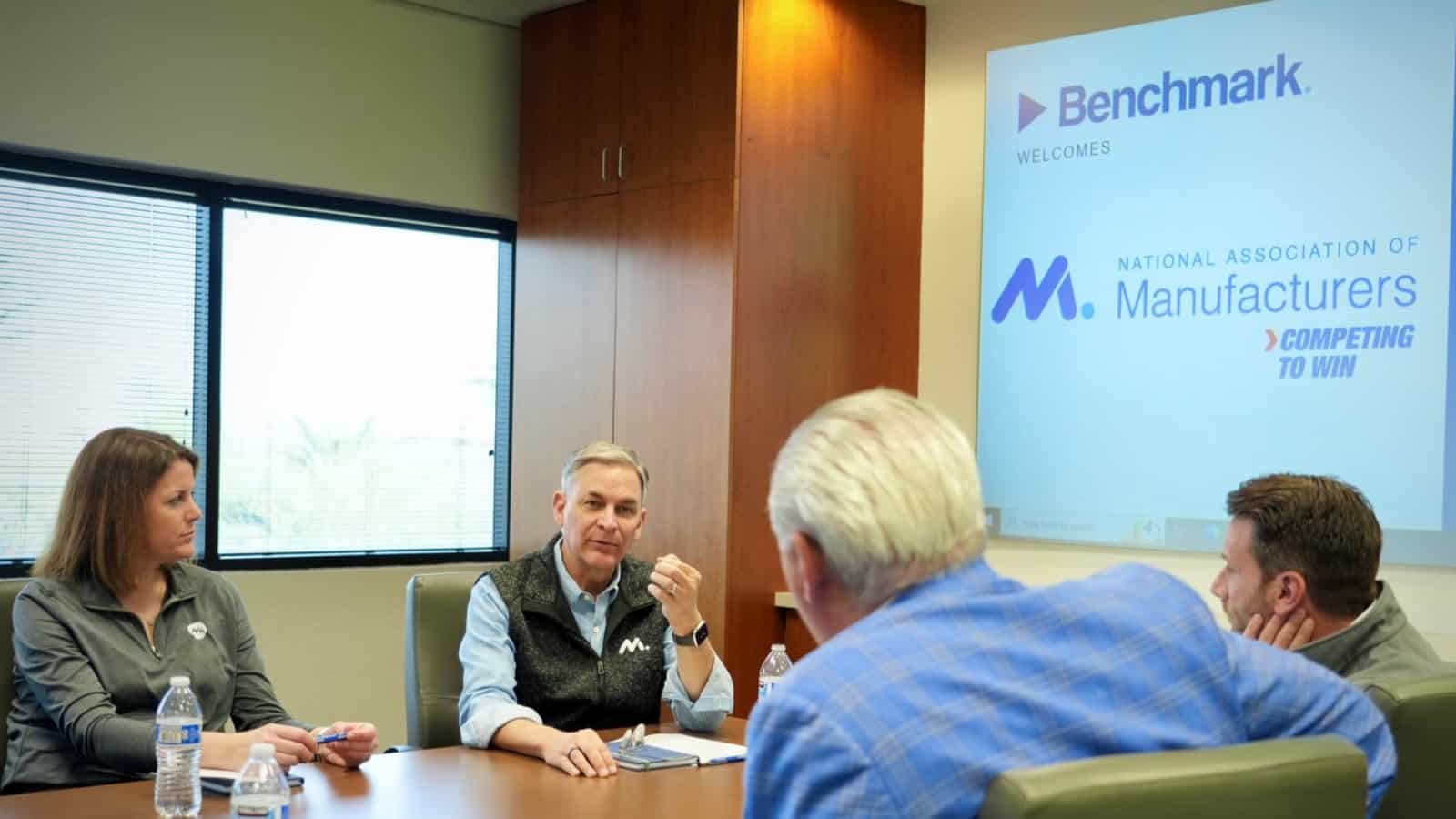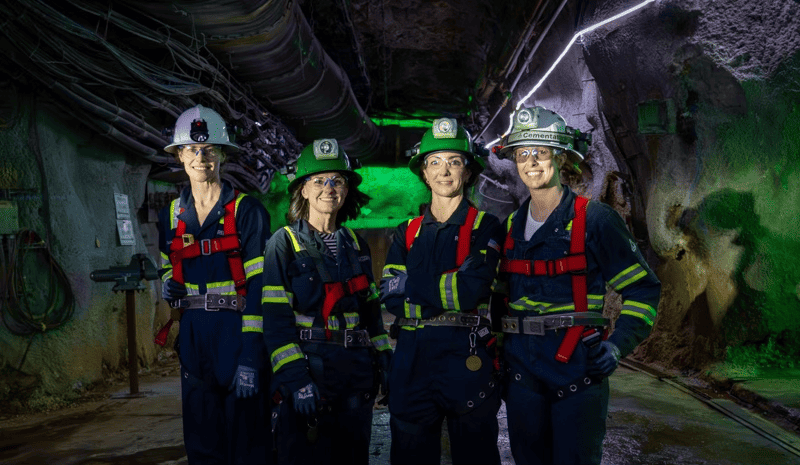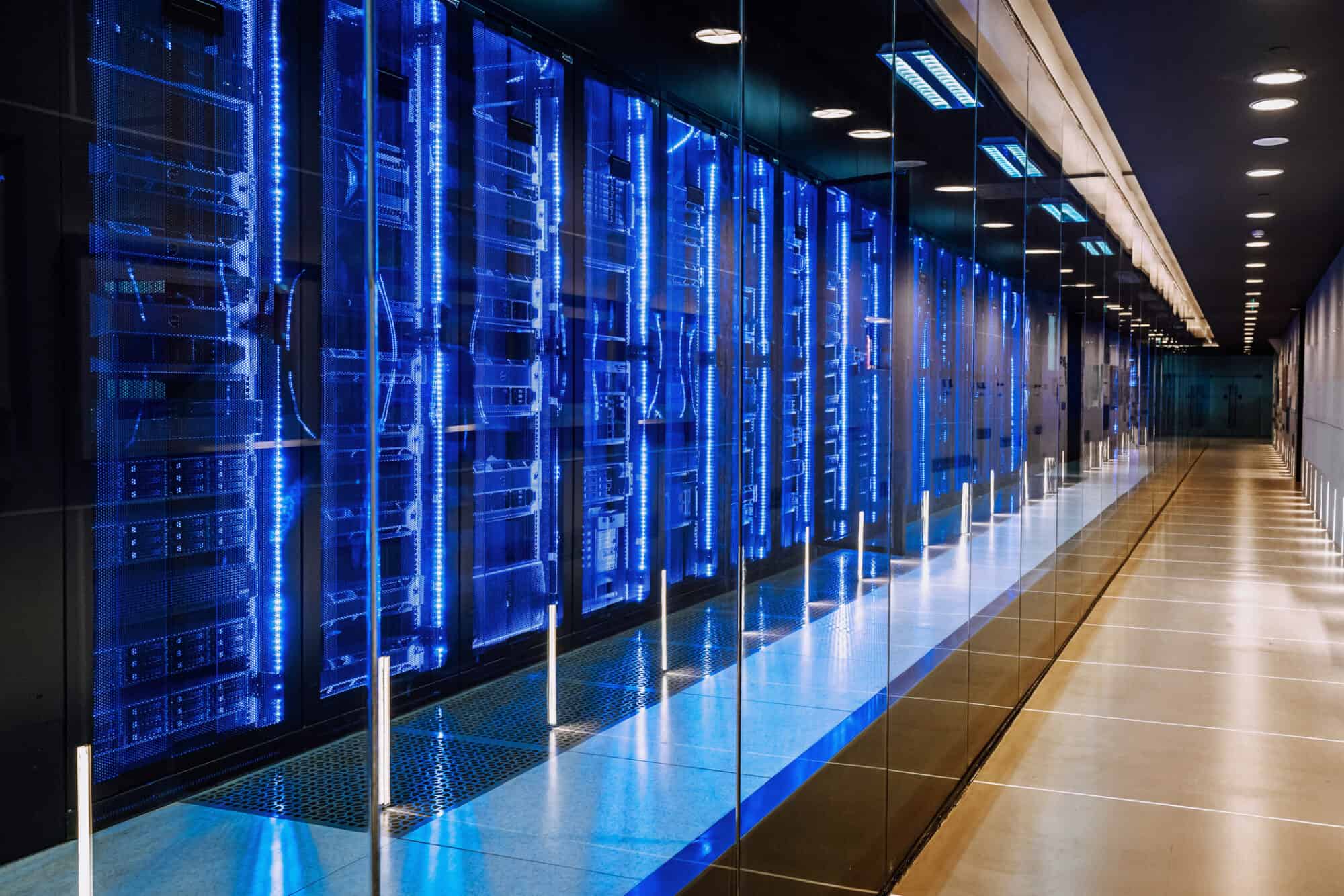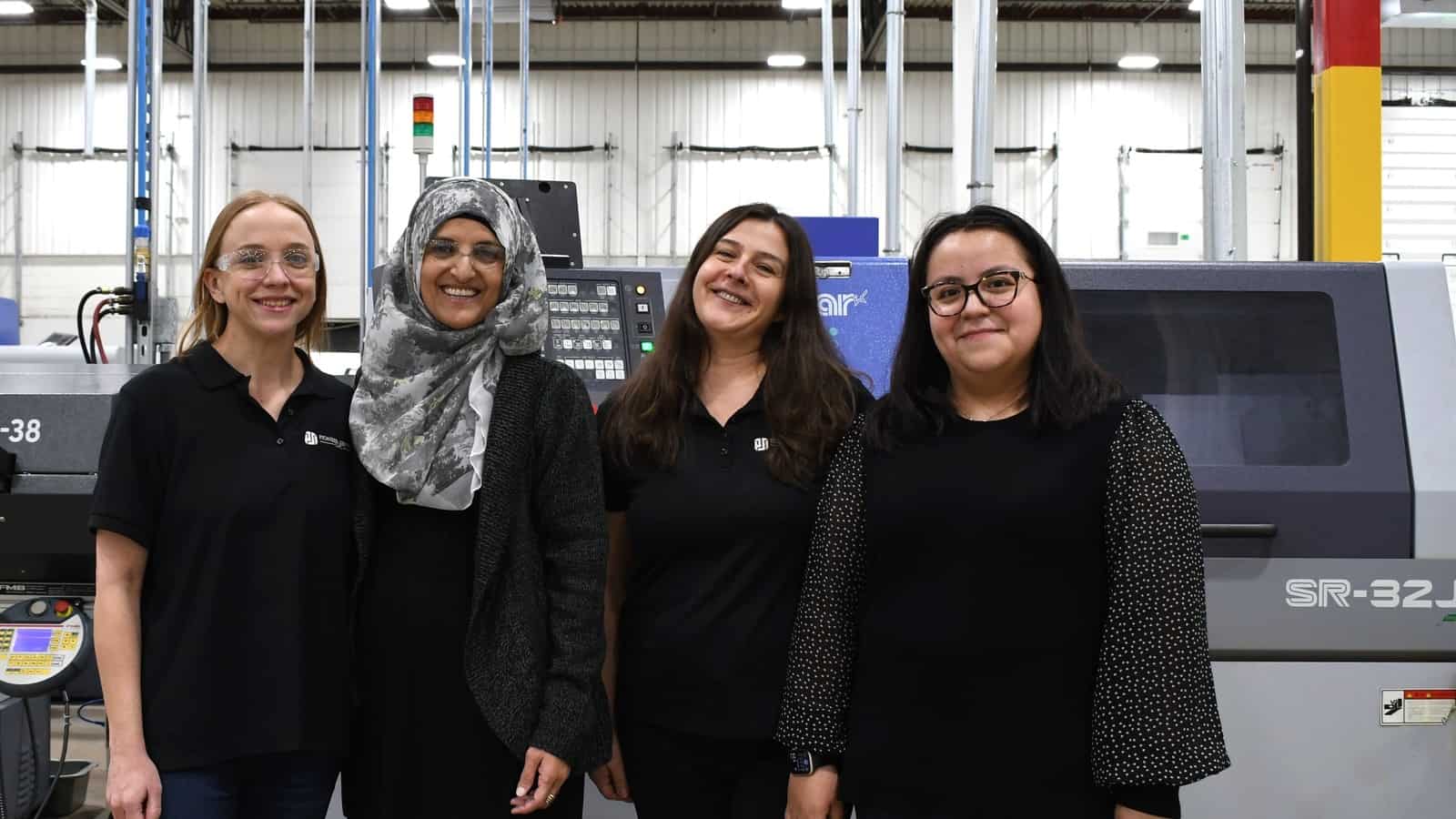WTO Meeting Kicks Off to Challenges; “Big Deals Unlikely”

With economic challenges and “geopolitical tensions” threatening international commerce, the World Trade Organization faces a difficult job at the 13th Ministerial Conference, according to AFP.
What’s going on: At the meeting, which began Monday in Abu Dhabi and is expected to conclude on Thursday, “[t]he WTO is hoping for progress, particularly on fishing, agriculture and electronic commerce. But big deals are unlikely as the body’s rules require full consensus among all 164 member states—a tall order in the current climate.”
- The organization could also decide on whether to expand a 2022 TRIPS waiver to include COVID-19 therapies—a move that would be damaging to manufacturing in the U.S.
- “The WTO committee in charge of discussing intellectual property rights recently told the WTO General Council that it had been unable to reach agreement on the issue after more than 18 months of discussion,” POLITICO reports. “That could signal the end of the road for efforts to expand the waiver, but [there is] fear it could still be approved by ministers at MC13 as part of the final horse-trading that occurs to reach some deal.”
Reform needed: “Speaking on the first day of MC13, WTO Director-General said that ‘multilateralism is under attack,’ highlighting a need to ‘reform the multilateral trading system’ and boost international cooperation,” according to AFP.
- European Trade Commissioner Valdis Dombrovskis echoed the call for reform, saying, “The world has changed. And institutions like the WTO need to evolve too. We are faced with crises wherever we look.”
No waiver expansion: One change that should not take place, however, is the TRIPS waiver expansion, the NAM told U.S. lawmakers ahead of the WTO meeting. NAM President and CEO Jay Timmons met with Okonjo-Iweala and WTO Deputy Director General Angela Ellard in Geneva last March to discuss the waiver.
- “The proposed expansion of the TRIPS waiver to include diagnostics and therapeutics would jeopardize American innovation, endanger U.S. jobs, undermine future investment and research and development for lifesaving products that are fundamental to fighting global crises, including many diseases and health conditions other than COVID-19, and pose serious safety concerns,” the NAM and six association partners told Secretary of State Antony Blinken, Commerce Secretary Gina Raimondo, U.S. Trade Representative Katherine Tai and White House Chief of Staff Jeffrey Zients last week.
Digital commerce: There are some concrete actions that should be taken regarding the WTO, the NAM told the House Ways and Means Subcommittee on Trade this month.
- The USTR should reverse a decision it made in October 2023 to “drop the longstanding digital trade position of the U.S. at the WTO. This longstanding position, which has clear bipartisan support from the U.S. Congress, seeks to protect cross-border data flows, prohibit costly data localization requirements abroad, defend American digital products from discrimination and protect American IP.”
- And the U.S. should urge the WTO to institute a permanent e-commerce moratorium. Allowing the current “moratorium on customs duties for electronic transmissions … to expire would inject uncertainty and impose unfair burdens on manufacturers in the U.S.”
The last word: “The WTO remains a critical forum to advance free and fair trade globally,” said NAM Director of International Policy Dylan Clement.
- “The outcome of the 13th WTO Ministerial Conference is important because an expansion to the TRIPS waiver or letting the e-commerce moratorium expire could significantly harm manufacturers in the United States. As such, manufacturers will be watching the WTO Ministerial this week very closely.”
Arizona: Manufacturing’s Crossroads

In the heat of Arizona’s “Silicon Desert” and surrounding communities, the future of America’s global competitiveness and climate goals aren’t just being forged—they also hang in the balance.
Last week for the first time in 2024, the NAM brought its Competing to Win Tour to Arizona, and that stark contrast between the status quo and the probable future was on display in Phoenix at global semiconductor equipment manufacturer Benchmark and small manufacturer Valley Forge & Bolt and at Resolution Copper in Superior.
- NAM President and CEO Jay Timmons, Manufacturing Institute President and Executive Director Carolyn Lee—who leads the NAM’s 501(c)3 workforce development and education affiliate—and Arizona Chamber of Commerce & Industry President and CEO Danny Seiden met with local manufacturers to gain their perspective and insights.
Why it matters: The Biden administration and Congress have secured key measures to bolster manufacturing in the U.S., including the NAM-championed CHIPS and Science Act and tax credits in the Inflation Reduction Act to manufacturers investing in advanced production and energy projects. But raw material, workforce and tax and regulatory policy challenges threaten to undermine policy aspirations.
Silicon Desert expansion: With the CHIPS and Science Act poised to transform the sector, Benchmark President and CEO Jeff Benck and Executive Vice President and Chief Operating Officer Dave Valkanoff led the tour of their state-of-the-art Phoenix facility.
- In a good spot: Benchmark is well-positioned for the coming growth in semiconductor equipment demand. It is focused on securing its workforce and navigating a complex regulatory landscape to maximize the opportunity.
- Workforce woes: Even with the NAM and the MI’s Benchmark-supported Creators Wanted campaign boosting the industry’s image and the MI’s FAME initiative training thousands of technicians, finding skilled labor remains the top challenge. Benchmark advances earn-and-learn programs and partnerships with Arizona State University and community colleges to help fill the pipeline, actions that, according to Lee, “can help change the game.”
- Red tape delays: Regulatory hurdles pose obstacles. Benchmark seeks streamlined permitting and sensible rules to maintain their global edge.
- Bullish outlook: Benck is optimistic about the future of U.S. manufacturing and semiconductor demand. Investments in people and technology position the company well to deliver the next generation of innovation.

Taxes and immigration: The NAM’s return visit to Valley Forge & Bolt, after a stop last year with Sen. Kyrsten Sinema (I-AZ), shone a spotlight on the real-world impact of stalled tax policy and the urgent need for reform.
- Valley Forge & Bolt saw record sales in 2023 thanks to 2017 tax reforms boosting its equipment upgrades. Now, with provisions like full capital investment expensing stalled in Congress, orders have slowed.
- CEO Michele Clarke and COO Bret Halley made the case for R&D expensing, interest deductibility and a return to full capital investment expensing. Without these, they said, job growth and America’s manufacturing competitive edge are at risk.
- Skilled workers needed: Despite its success, Valley Forge says finding skilled workers is a constant struggle. Immigration reform is a must to secure the right talent pipeline, said Clarke. “Did you notice our engineers? Most of them are under 30 because we’re snatching them right out of college,” added Clarke. “The engineering talent in this country is dwindling, and we’re not authorizing enough green cards. I, myself, was a green card holder before I became a citizen.”

Policy roadblocks: The NAM’s visit to Rio Tinto’s Resolution Copper site highlighted the urgency of permitting reform in the face of critical mineral needs.
- Copper’s critical role: Copper is essential for clean energy. Electric vehicles, solar power grids and wind turbines all demand huge quantities. Yet, the U.S. remains heavily reliant on imported copper, jeopardizing progress.
- Massive potential: The domestic solution lies within the stalled Resolution Copper mine. With its potential to supply 25% of U.S. copper demand, it’s poised to be a key piece of the puzzle.
- Project in limbo: Despite a 350-strong workforce modernizing and maintaining the mine, permitting delays stifle the project’s full impact.
- Sustainable practices: “Resolution Copper is the future of eco-conscious mining,” said NAM Managing Vice President of Brand Strategy Chrys Kefalas, who toured the site. “Their team innovates sustainable practices, leads in water conservation and even supplies 7 billion gallons of water to Arizona farms. And what is more, it isn’t just the facts of the matter or what you saw that drives this point home, but the people who have worked on the site for years make all that clear with the pride they have about the project and their determination to see Resolution Copper through to making lives better for everyone.”
- Jobs and growth: Led by President and General Manager Vicky Peacey, the project promises to contribute $1 billion annually to the economy and more than 1,500 Arizona jobs. “This is about people, jobs and supply chains; and it’s also about realizing clean energy ambitions at the speed and scale that climate goals demand,” said Kefalas.

The bottom line: “The future of U.S. manufacturing might hinge on these contrasting stories. Are we a nation that champions innovation, attracts and keeps the brightest here, supports our manufacturers and tackles climate goals with homegrown solutions, or one that stalls progress in its own backyard,” said Timmons.
- “Arizona is at the epicenter of American manufacturing’s next chapter, and with smart policies and fewer unforced errors at the federal level, we can clear the runway for growth,” added Seiden.
Trend of the Week: Data in Action

Everyone knows that data is an indispensable resource, but putting it to use is a whole different challenge from collecting it in the first place. Here’s what you need to know about today’s manufacturing trend, the industry’s increasing reliance on data-driven insights.
What manufacturers should do: According to NAM experts, manufacturers seeking to make the most of their data should focus on five key steps:
- Understand how to gather data to enable meaningful analytics.
- Improve data governance for quality and security.
- Determine what data are important to your business and operations.
- Learn how to assign value and view the data through the appropriate lens.
- Know how to use data to make business decisions.
Expert opinion: According to John Petrusick, managing director of NTT’s manufacturing data and analytics practice, companies should consider working backward to some extent, and start by thinking about which business processes the data will influence—and how.
- “Most of us have grown up in a world where we think of data as a flow from source to consumer, or left to right,” he noted. “In such thinking, we have generated analytics and insights historically by first thinking about ‘what data do I have?’ But what if we thought about generating analytics and insights by thinking ‘right to left’?”
Resources for you: Looking for more resources on data management? Start with these NAM offerings:
- This Master Class Series from the Manufacturing Leadership Council (the NAM’s digital transformation division) will guide you through case studies and best practices regarding data analysis.
- CONNEX Marketplace uses data visualization tools to help you make connections to suppliers and buyers, offering exceptional insight into your supply chain.
- The NAM’s Power of Small newsletter keeps small and medium-sized manufacturers up to date on advocacy, policy, digital trends and much more. Check it out.
Read the full 2024 trends report here.
GlobalFoundries to Get $1.5 Billion in CHIPS Funding

Semiconductor maker GlobalFoundries Inc. will be the first recipient of funding under the NAM-supported 2022 CHIPS and Science Act, CNBC reports.
What’s going on: “The U.S. government is awarding $1.5 billion to GlobalFoundries to subsidize semiconductor production, the first major award from a $39 billion fund approved by Congress in 2022 to bolster domestic chip production.”
- The Malta, New York–based GlobalFoundries—the largest U.S. manufacturer of customized semiconductors and the world’s third-biggest chipmaker—plans to use the funds to build a new chip-production facility in its hometown and expand existing facilities there and in Burlington, Vermont.
- The Malta facility will manufacture high-value semiconductors not currently produced in the U.S., Commerce Secretary Gina Raimondo said.
- In addition to the grant, the federal government is also offering GlobalFoundries $1.6 billion in loans.
Why it’s important: “The chips that GlobalFoundries will make in these new facilities are essential chips to our national security,” Raimondo said on Sunday, adding that the “agency is in active talks with numerous applicants and expects to make several announcements by the end of March.”
- In January, Commerce announced it was awarding defense contractor BAE Systems $35 million under the CHIPS Act.
Our role: The NAM—which helped secure several manufacturing priorities in the final CHIPS Act legislation—welcomed the news.
- “Congratulations to [GlobalFoundries]!” the NAM wrote in a social post Monday. “The NAM-championed CHIPS and Science Act is strengthening manufacturing in the U.S. We will continue to work with Congress and the White House to enact permitting reforms that will help speed the construction of these vital projects.”
ICYMI: NAM Opposes Biden Administration’s Proposal to Undermine Manufacturers’ IP Rights
Washington, D.C. – Following the National Association of Manufacturers’ submission of comments opposing the Biden administration’s proposal that would allow the government to march in and seize the rights to groundbreaking innovations developed by manufacturers, NAM Vice President of Domestic Policy Charles Crain released the following statement:
“Undermining America’s world-leading patent system is a recipe for reduced innovation and significant economic damage, with a disproportionate impact on small manufacturers. The administration’s march-in proposal would raise the spectre of government price controls on a wide range of technologies—fundamentally reshaping how life-changing innovation is developed, financed and commercialized in the United States. The administration must affirmatively and unequivocally withdraw this radical and flawed proposal.”
The NAM’s comments on the proposal are available here. Key excerpts from the comments are below:
- The proposal contemplates an expansion of the Bayh-Dole Act’s march-in provision, which has never previously been used during the 44 years since the law’s enactment. This unlawful expansion of a 44-year-old statutory provision would prompt the government to exercise march-in rights to force patent licenses to private-sector inventions that are derived at least in part from federal funding. This price control measure would impact innovative companies of all kinds across the manufacturing sector.
- Undermining manufacturers’ IP rights would have sweeping ramifications for innovation in the United States and America’s world-leading innovation economy. In particular, start-ups and small businesses would bear the brunt of the drastic changes proposed by the administration, as the spectre of government march-in would disincentivize early-stage entrepreneurship and dissuade much-needed capital formation from outside investors.
- If the administration moves forward with the proposal, the unprecedented expansion and use of the Bayh-Dole Act’s march-in provision would impede R&D, investment and the commercialization of innovative technologies. It would cause significant market uncertainty as to current and future patent licenses that are derived in any part from federal funds—directly contradicting the intent and purpose of Bayh-Dole. And it would hinder industry collaborations with research universities and laboratories across the country, stymieing manufacturers’ efforts to develop the products and technologies of the future and bring them to the public.
- Courts have found that an agency violates the major questions doctrine on matters of significant economic importance when the agency cannot “point to clear congressional authorization for the power it claims.” The government’s ability to seize private-sector IP is undoubtedly a topic of vast economic and political significance; as discussed, America’s robust patent system lies at the heart of the innovation economy in the United States—and the proposal would threaten the financing of that innovation ecosystem and the economic viability of many of its key participants (including start-ups, entrepreneurs, small and medium-sized businesses, universities and more). The effects of the proposal would be felt in every state and every congressional district. Yet, the proposal cannot point to “clear congressional authorization” for including a price consideration in the government’s march-in analysis because it does not exist; as explained above, price is wholly absent from the Bayh-Dole Act’s text. More broadly, the act was enacted to support public–private partnerships and bolster the innovation economy in the United States—yet, the proposal would undermine and endanger American innovation. It is unlikely that Congress, in passing the Bayh-Dole Act, “could reasonably be understood to have granted” the administration the power to vitiate the primary goal of the act itself.
- The NAM respectfully encourages the administration to provide certainty to manufacturers and other stakeholders in the innovation economy by affirmatively and unequivocally withdrawing the proposal and making clear that the administration will not implement any of its recommendations. Abandoning and disclaiming the proposal’s attempts to impose price controls and undermine the Bayh-Dole Act will ensure that manufacturers in the United States can continue to lead the world in R&D and innovation—and continue to create and support well-paying jobs vital to the success of the U.S. economy.
-NAM-
The National Association of Manufacturers is the largest manufacturing association in the United States, representing small and large manufacturers in every industrial sector and in all 50 states. Manufacturing employs nearly 13 million men and women, contributes $2.85 trillion to the U.S. economy annually and accounts for 53% of private-sector research and development. The NAM is the powerful voice of the manufacturing community and the leading advocate for a policy agenda that helps manufacturers compete in the global economy and create jobs across the United States. For more information about the NAM or to follow us on Twitter and Facebook, please visit www.nam.org.
How Pioneer Service Solves the Retention Puzzle

For Pioneer Service President and Co-Owner Aneesa Muthana, having an engaged team is the key to solving the workforce retention puzzle. The Addison, Illinois–based, woman-owned company is among the many manufacturers that find retention, along with recruitment, to be top business challenges, as the NAM’s Manufacturers’ Outlook Survey shows. So how has Muthana gone about building such a team?
Where it all starts: For Muthana, meeting this challenge begins with upholding the company’s core values: integrity, diversity, leadership, outreach, stewardship, quality and learning.
- These words appear on the shop floor, and every job candidate who comes in for an interview receives a handout outlining their importance. “These are more than just pretty words on a wall,” said Muthana. “We chose these values as a team because they pinpoint our path to success, both financially and ethically.”
- “I give them a copy because I want them to understand the importance from the beginning,” said Muthana. “We want to plant the seed before they’re on our payroll that these are the expectations. Then it becomes fair to hold people accountable to them.”
Providing training opportunities: In keeping with its core values of stewardship and learning, Pioneer Service offers internal training opportunities for employees who express an interest.
- “We offer training to anyone who raises their hand, whether it be in safety or leadership,” said Muthana. “It can also be very technical training on the shop floor. We also provide GD&T training, including for our sales team.”
- GD&T, or geometric dimensioning and tolerancing, determines how parts fit together into an assembly to form a product.
- The benefit of having a salesperson learn about GD&T? “A salesperson would be able to look at a customer print confidently and feel comfortable talking to the customer without needing to have an engineer in the room,” Muthana pointed out.
Offering support: Pioneer Service established a chaplaincy program, which connects employees and their families undergoing hardships—such as caring for an elderly parent, grieving the loss of a loved one or dealing with a personal struggle—with a chaplain who can provide counseling and offer spiritual and emotional support. Muthana says that the chaplaincy program is open to any employee, regardless of religious background or preference.
- “The chaplain service is part of our team,” said Muthana. “We have one chaplain come in every week—one week a male and then the following week a female—who is available to meet with staff if needed.”
- Muthana says she used the service a few years ago when her son, who is in the military, came back from Afghanistan. Many of his friends did not.
- “As a parent, you feel grateful that your child survived, but also guilty for feeling that way because a lot of his friends didn’t come home. The chaplain service provided me someone to talk to because I couldn’t talk to my family, and I couldn’t talk to my staff,” she recalls. “I developed a strong relationship with the chaplain that I feel never would have happened if I didn’t look out for my staff and implemented the service.”
Job shadowing: When Muthana goes to a speaking event or conference, she sometimes takes one or two of her staff with her so they’re able to benefit from attending. It’s also a way for her to get to know her staff on a more personal level, outside of the formal workplace setting.
The last word: Muthana shared some advice for companies struggling with workforce retention:
- “Having an engaged team and workers only happens with a people-first mentality,” said Muthana. “When you take care of them, you become successful because you have an engaged team that has your back.”
- “It’s harder to make a profit than ever. The only way that we’re going to be successful is by having an engaged team.”
Go deeper: The Manufacturing Institute (the NAM’s workforce development and education affiliate) has many resources to help employers retain and develop their teams.
- Start with this study to learn how to build positive company culture and engage employees, explore strategies in boosting retention and employee engagement, delve into tips on attracting and retaining talent in rural vs. urban settings and check out the MI’s recent white paper on flexibility approaches for manufacturing production workers, a key tool to improving the employee experience.
- Pioneer Service’s approach to workplace needs exemplifies the benefits of focusing on the holistic frontline employee experience, which include higher retention, less absenteeism and greater engagement, according to a study conducted by the MI and PwC.
- Learn more about Women MAKE America and the 35×30 campaign, the MI’s initiatives to increase the number of women in manufacturing, tapping into this population to address persistent workforce shortages. Military-affiliated talent and second chance populations are great sources, too.
“March-In” Rights Would Harm Manufacturing, Economy

So-called “march-in” rights that would enable the federal government to seize manufacturers’ intellectual property are “a major threat to manufacturers in America,” according to a new seven-figure ad campaign launched by the NAM.
What’s going on: Last month, the Biden administration issued a proposal that would allow the government to take over privately held patents if those patents had been developed in part with federal research dollars.
The problem: Undermining companies’ IP rights would roll back the progress made under the Bayh-Dole Act, which allowed for commercialization of federally funded research and “unlocked all the inventions and discoveries that had been made in laboratories throughout the United States with the help of taxpayers’ money,” according to a recent op-ed in The Hill.
- Because the government is “inviting march-in petitions on every patented technology that benefited from even modest federal grants,” the proposal could “decimate American innovation [and] … stifle investment in climate change, sustainable agriculture, advanced computing, energy, medicines” and more, according to the op-ed writers, two former undersecretaries of commerce for intellectual property.
- In addition, the proposal is “putting American jobs at risk,” according to the NAM’s new ad.
The NAM says: “This radical new proposal is a major threat to manufacturers in America and counter to the president’s goals of growing the sector,” NAM President and CEO Jay Timmons said.
- “Empowering the government to march in and seize the rights to private-sector patents and technologies threatens American innovation and R&D, putting millions of well-paying manufacturing jobs at risk. Policymakers must protect manufacturers’ intellectual property rights and stop this government overreach.”
Manufacturers Launch Seven-Figure Ad Campaign Opposing Biden Administration’s March-In Proposal
Washington, D.C. – The National Association of Manufacturers has launched a seven-figure television and digital advertising campaign opposing the Biden Administration’s new proposal that would allow the government to march in and seize the rights to groundbreaking innovations developed by manufacturers.
“This radical new proposal is a major threat to manufacturers in America and counter to the president’s goals of growing the sector,” said NAM President and CEO Jay Timmons. “Empowering the government to march in and seize the rights to private-sector patents and technologies threatens American innovation and R&D, putting millions of well-paying manufacturing jobs at risk. Policymakers must protect manufacturers’ intellectual property rights and stop this government overreach.”
To view the latest television ad, click here.
-NAM-
The National Association of Manufacturers is the largest manufacturing association in the United States, representing small and large manufacturers in every industrial sector and in all 50 states. Manufacturing employs nearly 13 million men and women, contributes $2.75 trillion to the U.S. economy annually and accounts for 53% of private-sector research and development. The NAM is the powerful voice of the manufacturing community and the leading advocate for a policy agenda that helps manufacturers compete in the global economy and create jobs across the United States. For more information about the NAM or to follow us on Twitter and Facebook, please visit www.nam.org.
New Study: “Right-to-Repair” Stifles Innovation, Threatens Consumer Safety
Washington, D.C. – The National Association of Manufacturers released a new study, “The Economic Downsides of Right-to-Repair,” which highlights the cost to the environment, consumer safety and manufacturing innovation of providing unfettered access to complex software and components in manufactured goods. The study analyzes the wide range of unintended and potentially harmful consequences of “right-to-repair” legislation.
The study finds that instituting “right-to-repair” polices directly counteracts many federal laws put in place to protect both manufactures and consumers. The study states that, “bypassing the proper channels for repair will come at a steep cost to quality, performance, consumer safety, the environment and the broader U.S. economy.”
Notably, “right-to-repair” policies could seriously disrupt original equipment manufacturers’ supply chains, which would leave many consumers—especially in rural communities—without a reliable and efficient place to get a repair. “This could increase costs for customers significantly, as delays in placing equipment back in service directly affect a business’s bottom line,” the study warns. The study further highlights an Environmental Protection Agency estimate that more than 500,000 tons of excess emissions have entered the atmosphere since 2009 due to operators disabling or modifying emission controls in vehicles across multiple industries.
“For decades, manufacturing innovation has created new products and technologies that improve modern life,” said NAM Managing Vice President of Policy Chris Netram. “Unfortunately, so called ‘right-to-repair’ policies would threaten these programs, resulting in harm to the environment and putting American’s data and safety at risk.”
Background: In 2021, President Joe Biden signed an executive order encouraging the Federal Trade Commission to enact policies limiting OEMs’ ability to prevent nonauthorized entities from performing certain repairs. The NAM submitted comments to the FTC, calling “right-to-repair” legislation a, “solution in search of a problem.” As of 2023, New York, Minnesota and Colorado have enacted “right-to-repair” legislation, and 23 other states have also considered legislation that would force manufacturers to provide direct access to replacement parts, grant unfettered access to the central processor and further limit their ability to constrain what consumers can do with their product.
-NAM-
The National Association of Manufacturers is the largest manufacturing association in the United States, representing small and large manufacturers in every industrial sector and in all 50 states. Manufacturing employs nearly 13 million men and women, contributes $2.91 trillion to the U.S. economy annually and accounts for 53% of private-sector research and development. The NAM is the powerful voice of the manufacturing community and the leading advocate for a policy agenda that helps manufacturers compete in the global economy and create jobs across the United States. For more information about the NAM or to follow us on Twitter and Facebook, please visit www.nam.org.
NAM Bolsters Government Relations Leadership
Washington, D.C. – The National Association of Manufacturers named Stef Webb as its new Managing Vice President of Government Relations. Webb joins the NAM from Gopuff, the fast-growing $15 billion global consumer goods and food delivery company, where she served as director of corporate affairs, helping to establish its federal affairs program and spearhead public and government affairs during key market entries globally.
“Whether she’s bringing together lawmakers and line workers in Midwest manufacturing facilities or building relationships on Capitol Hill or in world capitals, Stef has built a sterling reputation as an effective and collaborative advocate who does not relent until the policies or priorities she’s fighting for are across the finish line,” said NAM President and CEO Jay Timmons.
Reporting to NAM Executive Vice President Erin Streeter and working alongside the organization’s broader advocacy leaders, Managing Vice Presidents Jamie Hennigan (Communications and Public Affairs), Chris Netram (Policy) and Chrys Kefalas (Brand Strategy), Webb will lead the association’s government relations strategy to advance the competitiveness of manufacturers in the United States.
“In this unpredictable and fast-changing political environment, it’s never been more important to have a government relations team that is steps ahead of where the policy opportunities and challenges could go,” said Streeter. “With Stef helping to lead our team, we’ll build on our track record of preparing for tomorrow, anticipating future needs and being a credible and trusted go-to voice and resource for manufacturers and our nation’s leaders.”
Webb brings proven experience in many areas critical to continuing to drive unapparelled results for the industry. She has held leadership roles in government relations, policy, political fundraising, political affairs, communications, membership, finance and operations. Prior to Gopuff, Webb served as director of federal government affairs at NAM member company Anheuser-Busch, showcasing her ability to bridge divides, winning support for key manufacturing priorities in the United States and creating initiatives—like Brew Across America—that brought policymakers together. During this part of her career, Webb’s successful and effective advocacy work first came to the attention of Timmons and Streeter.
“Manufacturing is the backbone of the American economy and the foundation of business in America, impacting nearly every industry and person,” said Webb. “The NAM has built a reputation as the most trusted voice and resource for manufacturers in the United States, and I’m excited to join this team to create an even better environment for manufacturers to compete, to create more jobs and to improve lives.”
Webb also serves her country as an officer in the United States Navy Reserve.
-NAM-
The National Association of Manufacturers is the largest manufacturing association in the United States, representing small and large manufacturers in every industrial sector and in all 50 states. Manufacturing employs nearly 13 million men and women, contributes $2.91 trillion to the U.S. economy annually and accounts for 53% of private-sector research and development. The NAM is the powerful voice of the manufacturing community and the leading advocate for a policy agenda that helps manufacturers compete in the global economy and create jobs across the United States. For more information about the NAM or to follow us on Twitter and Facebook, please visit www.nam.org.